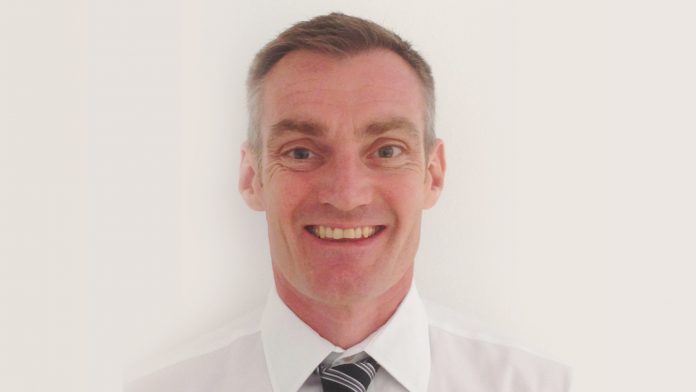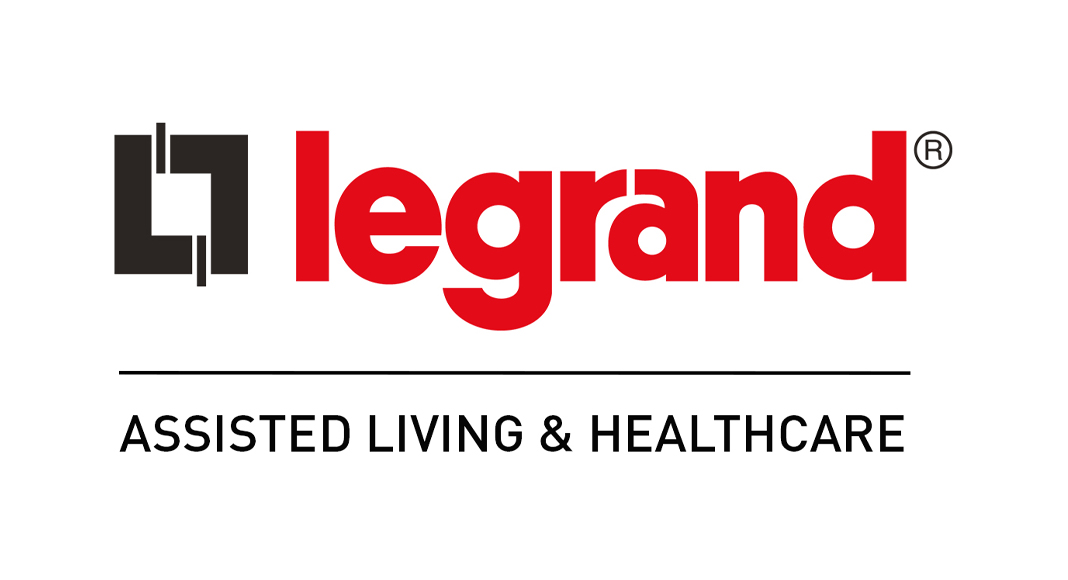
Stuart Carroll, from Legrand Assisted Living and Healthcare, spoke to Health Europa about TEC services and advancements in preventative care.
Legrand Assisted Living and Healthcare delivers innovative technology enabled care (TEC) solutions to allow people living at home or in residential care to live independently, with the reassurance that they can access support or care as soon as they need it.
Stuart Carroll, TECs & Monitoring Solutions National Sales Manager, spoke to Health Europa about how digital is changing the way technology enabled care services are delivered, emphasising why choice and interoperability must be at the heart of all TEC strategies going forward.
How has the pandemic changed perceptions around digital technology in health and care? What opportunities and challenges do you see ahead?
COVID-19 has really sped up the adoption of digital in many aspects of our lives. In health, social care, and housing, remote technologies have been critical to ensuring that people could continue to access the care and support they rely on day-to-day, whilst reducing the risk of transmission.
The preventative power of digital has also come into focus. Health, housing, and social care providers are becoming more aware of the data flowing from TEC systems and devices and the potential this connectivity has to predict when someone’s health might deteriorate. By using digital intelligence to identify people at risk of an increasing social care or health need, care professionals can put pre-emptive measures in place.
Early interventions give more control to individuals, helping people of all ages to choose the care they want and empowering them to maintain their independence, wellbeing, and dignity at home for longer. A proactive approach also reduces pressure on councils, NHS services, and housing associations, by offering greater flexibility around service delivery and, ultimately, helping to create a more sustainable future for health and care.
It is surprising to me that many service providers are still not realising these digital benefits or unleashing their own digital premium. There is less than four years to go until the UK replaces its traditional public switched telephone network (PSTN) with a purely internet-based network. The analogue PSTN switch-off is an ongoing process, and the transition from analogue to digital services has already begun.
For example, some older plug-and-play homecare alarms that use analogue-tone-based protocols may be able to continue to operate by installing a broadband service and an analogue terminal adapter (ATA), but this will be a temporary solution that will not overcome the challenge to protocol reliability and in fact will introduce a new problem of resilience. For example, as broadband routers are not battery-backed, the router will fail if local power does, as will the ability for the care alarm to connect to the ARC.
This is why the switchover has important implications for existing analogue TEC technologies.
The reduction/removal of analogue phone lines will have big repercussions for TEC service providers as this once safety critical equipment will now become less dependable. This could mean that less alarm calls reach the monitoring centres the first time and that systems will become more challenging to install and manage for the individuals they support.
How is Legrand supporting service providers around the challenges presented by the digital shift?
Every housing, social care, and health provider using technology enabled care is on the journey from analogue to digital. At Legrand Assisted Living and Healthcare, our aim is to support organisations to navigate these choppy waters, so that all of their residents, service users, and patients can access the benefits of digital, and no one is excluded. We are here to ensure that their services remain reliable and safe, operating to the highest standard during this transition and beyond.
At the core of our digital shift work is an internal programme, called Electrical Legrand Internet Of Things (ELIOT), which is speeding up the deployment of connected solutions to service providers across the world. In the UK, Legrand Assisted Living and Healthcare has used ELIOT to create a portfolio of digital systems and services – across our Tynetec, Jontek, and Aidcall brands. We have also developed a technical roadmap that is guiding organisations to switch in an efficient, safety-critical way.
We are offering free digital audits, allowing service providers to plot their journey from analogue to digital and identify key priorities. Our expert team of designers and engineers are also helping organisations around the country to plan, install, and maintain their new digital TEC systems.
Importantly, our research and development team have created a comprehensive range of new digital products that introduce safety-critical solutions into any environment that an older or vulnerable person calls home, from individuals’ homes through to group living environments and hospital wards. Adhering to TEC industry and digital standards, these solutions provide a consistent flow of data, enabling service providers to operate proactively rather than just reacting to alarm calls. They harness the many other advantages of digital, such as faster connections and call delivery times, reduced call costs, the ability to handle calls at any time and from any location (which was vital during lockdown), and interoperability through open protocols.
For individuals, digital devices such as our Reach Digital At-Home Alarm Units can be deployed easily and contact-free. They just need a plug socket and can be remotely configured and managed via the cloud. This ability to install and programme at a distance was significant during the height of the pandemic. For example, it meant that a vulnerable individual who had been discharged from hospital could immediately have a dispersed alarm in their home without a physical visit from an engineer. A Reach IP, complete with Touch 2 pendant, would be posted out to them, settings could be remotely changed via the cloud management portal (CMP) in line with their personal needs, and a TEC advisor was on hand – via phone or email – to offer support.
It is important to remember that different organisations are at different points in their digital journey. Sometimes, there might be a disconnect between alarm receiving centres being able to accept digital calls and residential TEC equipment being able to make them. Legrand Assisted Living and Healthcare has developed hybrid technology to address this issue. It enables service providers to operate effectively and reliably using analogue but then switch seamlessly to digital once their monitoring centre has the right infrastructure in place. This switch can be done individually or en masse, at the touch of a button, and means that no new money needs to be wasted on technology that will not work reliably in a digital world.
What are you doing to improve the interoperability of technology enabled care systems?
At Legrand Assisted Living and Healthcare, we believe flexibility and personalisation is vital to TEC. Our company ethos centres on choice and interoperability for everyone, from younger adults through to older individuals, in all health, housing, and social care environments.
Our digital TEC solutions use open protocols and conform to BSI standards around interoperability. From a digital perspective, this means the use of TS 50134-9 for TEC and BS 8521-2 for specialist sheltered housing systems. In fact, our CEO, Chris Dodd, and our Research and Development Director, Saeed Choudhary, have both been involved in developing these new TEC and grouped living standards. It means that housing providers do not have to buy all of their devices and monitoring services from one supplier – they are able to select a range of products to create person- centred outcomes and driven solutions, knowing that the different systems will connect and share information reliably.
When different technologies operate together in this way, choice and control is improved for individuals and service providers. For me, however, interoperability is much more than ensuring that one manufacturer’s TEC peripherals link with another manufacturer’s TEC hub. A truly interoperable TEC system can be installed by anyone and maintained by anyone, and that flexibility is something we pride ourselves on.
Our own monitoring centre solutions can communicate with outfield devices manufactured by other brands and our own TEC devices can communicate with any third-party monitoring centre platform, so long as they are all using open (interoperable) protocols.
Although interoperability is vital and it drives innovation and best value in the market, we must not lose sight of the safety considerations that surround it.
Take Bluetooth, for example. When you use your phone in the car, if it does not pair the first time, you try again. However, if someone falls and they call for help but their device does not connect, they cannot just switch it off and try again. They might be in severe pain or could be losing consciousness. Technology enabled care equipment is life critical – everything we do must be reinforced by the highest levels of safety and quality. It really could be the difference between living and dying. That is why all our systems comply with the complete BS EN 50134 series of standards.
How are you addressing risks around data security in your TEC systems?
We have all heard about devices, servers, and systems being hacked. If criminals have access to your personal data – whether that is by infiltrating your smartphone, laptop, or a third-party database – they can do all sorts of threatening and damaging things with it. But with technology enabled care data, the risks are higher. Information gathered and stored could belong to someone who is vulnerable – they might be older, have learning disabilities or a long-term condition – and they may have put their trust in a certain manufacturer or service provider to ensure their data is protected.
With the analogue to digital shift looming large, a priority for Legrand Assisted Living and Healthcare has been to ensure that all our digitally enabled devices and systems continue to meet high level safety and quality standards. This is particularly important in light of the increased level of cyber threats facing digitally enabled alarm systems.
Indeed, research from the TSA and Local Government Association into the state of data and cyber security across the UK TEC sector identified significant variations in the awareness and planning for data and cyber security amongst TEC service providers. The areas of highest risk were found to be systems and processes for IT and data management, network security, and technology management.
Designers and manufacturers of TEC products have a major role to play in addressing these security concerns and that is something we take very seriously at Legrand Assisted Living and Healthcare.
As worldwide experts in digital infrastructure, we understand IoT and connected devices inside and out and this research and development is woven into our TEC. When people buy our products, they can be assured that they are buying into a future-proofed technical roadmap that has standards at its core.









